REVITALISE YOUR MIND AND BODY
A program combined with Yoga & Meditation at the Vedic Yoga & Ayurveda Retreat Centre, Rishikesh, India
Discover the Power of Our Panchkarma Cleansing Program
Detox meaning in Ayurveda
One of the most commonly asked questions about cleansing is how to detox the body naturally. In the Indian tradition, the combined sciences of Ayurveda and yoga offer a way to naturally experience detoxification and its transformative power. This tradition has given us the ancient gift of Panchakarma, which has been handed down through the ages. It is a detox process that naturally removes toxins and restores balance between the body, mind and soul. This powerful body detox can help you rejuvenate your entire being and achieve optimal health and wellness, when combined with a specialised diet, herbal remedies, and treatments.
Experience Holistic Wellness at the Vedic Yoga & Ayurveda Retreat Centre
Located in the foothills of the Himalayas, Rishikesh is known as the “Yoga Capital of the World” and is a sacred destination for spiritual and wellness seekers. Situated on the banks of the holy River Ganga and surrounded by the Himalayan forests, Rishikesh provides the perfect background for your healing journey.
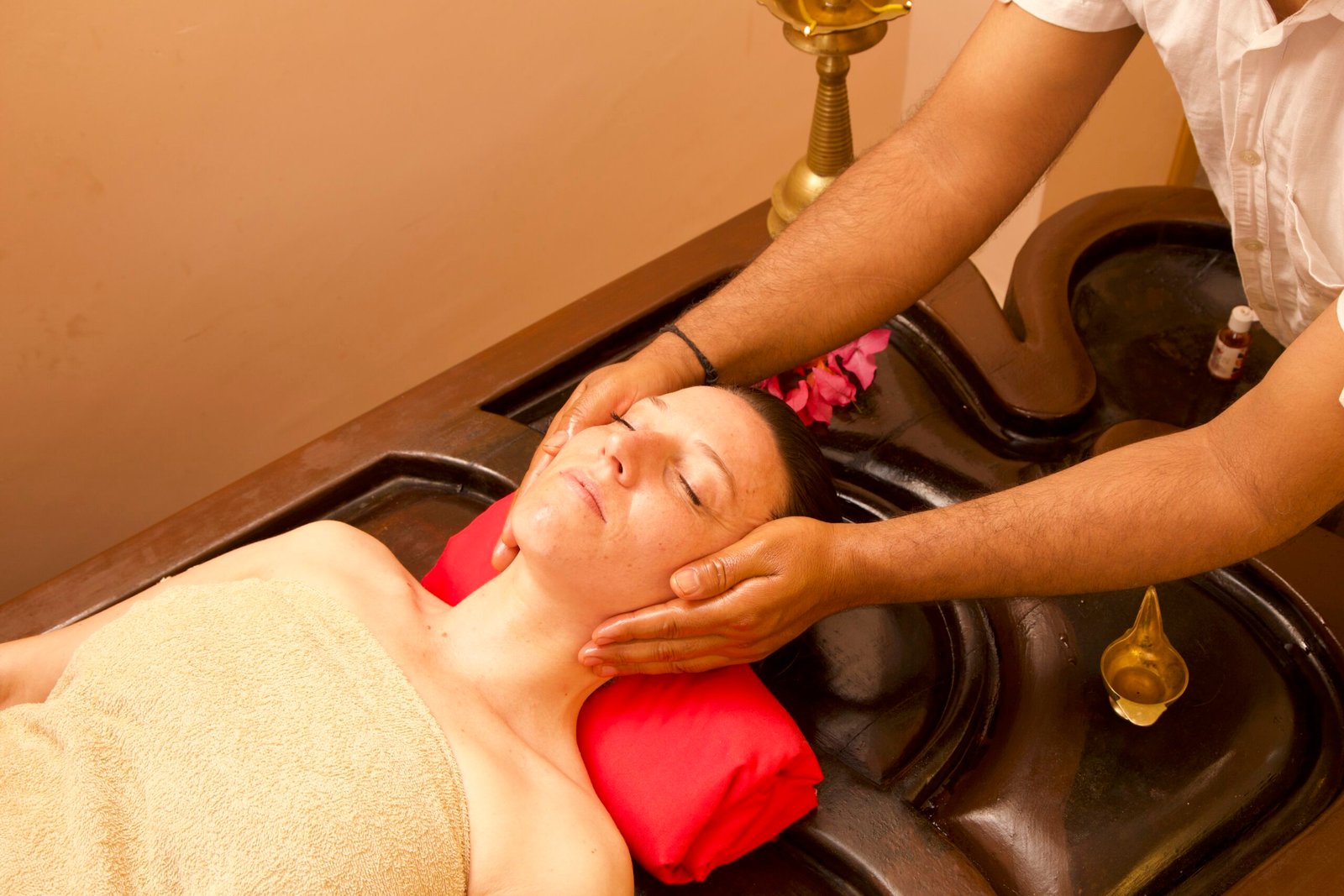

Our combination of the traditional science of Panchakarma and the ancient science of yoga stands out as a fundamental and unique component at the Vedic Yoga & Ayurveda Retreat Centre.
This combination ensures that in addition to cleansing the body, participants can establish a daily routine that includes morning meditation, hatha yoga, kundalini kriya, mantra chanting (particularly the healing mantra), yoga nidra and yoga philosophy.
Our dedicated and qualified teachers will also guide you through the yoga components according to your requirements, helping you to quieten the chatter of your mind and connect with your inner self.
The Negi family hosts and manages our Retreat Centre, and is ready to welcome you into our “home away from home” setting. Here, we foster a committed atmosphere that has supported many individuals on their journey towards holistic health.
Where can I find the best panchakarma treatment?
Our Panchakarma program at the Vedic Yoga & Ayurveda Retreat Centre allows you to experience the best detox therapy in Rishikesh, India. Here you can experience the ultimate body detox treatment, right in the spiritual heart of India.
Rishikesh is the best place in India for a Panchakarma retreat because it has been a place for spiritual upliftment through the ages. Within our establishment, we continue to uphold this sacred tradition, providing a committed environment for your healing and well-being, alongside your tailored treatments and yogic practices. Our program emphasises how to start and end your day with mindfulness techniques and learning the art of de-stressing and eliminating depression. We offer you a wide range of yoga/meditation practices to ensure that you find the one you best connect with, so that the routines you learn during your stay can easily be continued in your home as a yogic and Ayurvedic lifestyle.
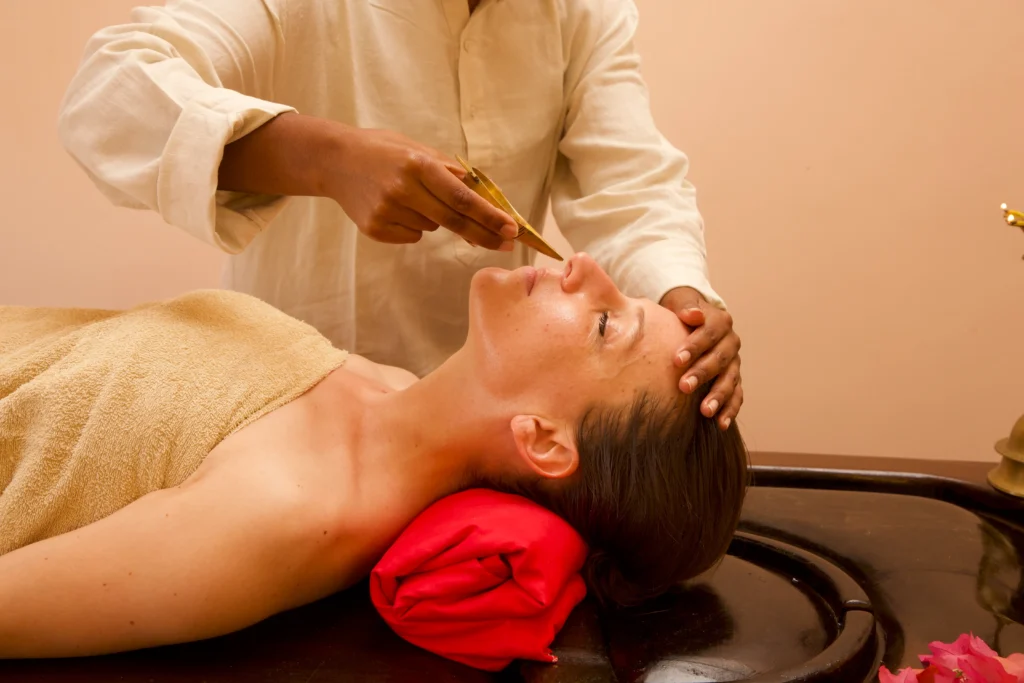
How do I know I’m getting the best Panchakarma treatment?
At the Vedic Yoga & Ayurveda Centre, you can be assured of receiving the most effective Panchakarma therapy at an affordable cost. We have a husband and wife team of highly qualified Ayurvedic physicians on call (both with PhDs in Ayurveda), a senior therapist who studied extensively in Kerala with 18 years experience, and a junior therapist with eight years experience who has studied and practised under our own senior therapist. Together, these experts will tailor your Panchakarma cleansing treatment to your specific needs from a range of Panchakarma therapies such as:
* Shirodhara (warm oil dripped over the forehead),
* Patra potli (massage with hot medicated bundles for joint & muscle pain)
* Basti (warm oil held in a ring over specific areas of pain in the body)
… and many more. They will also adjust your dietary requirements based on your personal needs and modified according to your individual nature and body type.
In addition, our Panchakarma treatment price list is not only competitive but also transparent, ensuring you get the best value for your investment in your health. You can view our prices on the Panchakarma page of our website.
How do I know if Panchakarma therapy is suitable for me?
Panchakarma is not suitable for those who are bedridden or very weak, as a certain level of strength is required to fully benefit from the Panchakarma cleansing process. However, if you’re between the ages of 18-75, and you have adequate strength, then you’re welcome at the Vedic Yoga & Ayurveda Centre in Rishikesh, India. Our expert team will support you on your journey of health and well-being through this ancient Ayurvedic cleansing practice.
Preparation for Panchakarma Retreat: The Best Diet Plan
If you’re planning to undergo a Panchakarma Retreat in Rishikesh, India, it’s essential to start preparing your body well in advance. Ayurveda maintains that every individual has a distinct body constitution, or “dosha”, based on the three body natures: vata, pitta and kapha.
The detoxification process of Panchakarma not only cleanses the body of toxins,
but restores the balance between your three doshas.
- Vata is governed by the elements of air and space, and is characterised by qualities such as creativity, flexibility, and quick thinking.
- Pitta is associated with fire and water, and is known for its intensity, focus, and ambition.
- Kapha is influenced by earth and water, and is marked by stability, strength, and nurturing qualities.
Take our quiz under the heading Self-diagnosis to determine your body type before preparing for your Panchakarma cleansing program. Understanding your unique combination of these body types helps you tailor your lifestyle, diet, and self-care practices to best prepare you for your Panchakarma retreat.
Adopt a vegetarian diet
Regardless of dosha type, one of the most critical aspects in preparing for a Panchakarma cleanse is adopting a pure vegetarian diet. It would be best to do this at least two days before starting the Ayurveda therapy, but the longer you eat a vegetarian diet before your treatment, the more helpful the body detox program will be.
If you’re preparing for Panchakarma at home, make sure you do not overeat, and that you include digestion-aiding spices in your cooking, such as:
- Mustard and cumin seeds – stimulate one’s digestive system
- Coriander – seeds and fresh coriander leaves soothe the digestive system and alleviate bloating and gas
- Fennel seeds – often chewed after meals to freshen the breath and relieve bloating, indigestion and gas
- Ginger – helps stimulate saliva production, helps break down food, and reduces nausea and bloating
- Turmeric – soothes the digestive tract due to its anti-inflammatory properties
- Asafoetida (hing) – reduces flatulence and promotes the release of digestive enzymes
- Black pepper – helps digestion by stimulating digestive enzymes
- Cardamom – soothes the stomach and relieves gas and bloating
- Cinnamon – helps digestion by controlling blood sugar levels
Detox Diet according to your body type
When preparing for an Ayurvedic body detox, you should ensure that your meals align with your dosha. Whether you are predominantly vata, pitta or kapha, selecting the right detox diet can help balance your dosha and support the cleansing process.
For vata types, who are prone to dryness and instability, it is best to focus on nourishing, grounding foods. Warm, cooked meals with plenty of healthy fats and spices can help to soothe vata and provide the stability needed during a Panchakarma retreat. Some options include nourishing soups, stews, and porridges made with grains like rice and quinoa.
Alternatively, pitta types benefit from cooling and hydrating meals. During Panchakarma, pitta types must avoid spicy, oily, and acidic foods that can aggravate their already fiery nature. Instead, opt for light, refreshing dishes like salads, steamed vegetables, and cooling beverages like coconut water.
Kapha types, who have a tendency for a slow metabolism and excess mucus, should focus on light, dry, and warming foods during Panchakarma. Plenty of spices, bitter greens, and legumes can help balance kapha and support the detox process. Avoid heavy, oily foods and opt for lighter options like roasted vegetables, lentil soups, and herbal teas.
Panchakarma meals according to the season
Ayurveda emphasises the importance of eating seasonally to support overall health and well-being, and especially when preparing for Panchakarma therapy. For example, warm, nourishing foods can help keep you grounded and energised in the colder months of winter. In the warmer months, opt for cooling, hydrating foods that can help balance excess body heat.
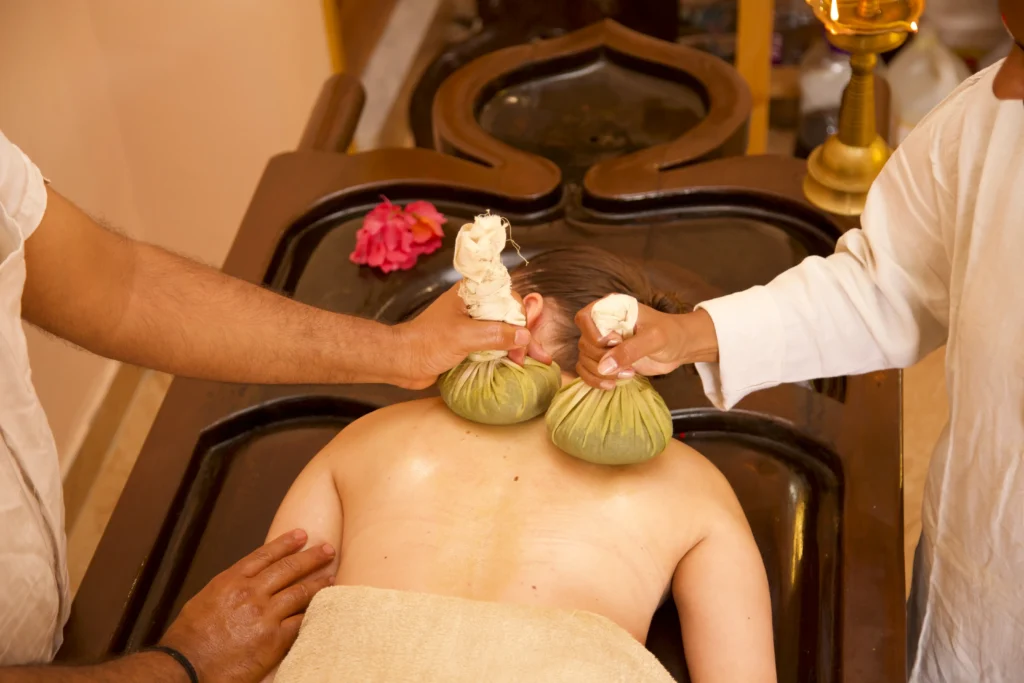
Whether you are vata, pitta, or kapha, there are multitudes of tasty and healthy vegetarian meals that can help you feel balanced and rejuvenated during your preparation.
The Indian one-pot meal known as kichadi, consisting of lentils, basmati rice, and vegetables cooked in medicinal spices and herbs, is a good option for all body types, regardless of the season. Drinking warm water throughout the day is also recommended, especially first thing in the morning as part of your preparation. This also helps to support digestion and detoxification. Try to avoid consuming coffee or alcohol during this time, and stick to drinking tea.
When is the best time of year for Panchakarma treatment in India?
The monsoon season, commonly referred to as Varsha Ritu, is considered ideal for taking part in Panchakarma therapy, as the high humidity can benefit the detox process by helping the skin to better absorb the Ayurvedic oils.
Additional preparations for Panchakarma
In addition to following the suggested detox diet for your body type, it is essential to take care of your body through other practices, such as massaging it with warm organic oil before bedtime. This helps to prepare it for the cleansing therapies.
After your Panchakarma treatment
After your Panchakarma treatments, don’t forget to take a bath to wash away any remaining oils and toxins from your body.
By following these tips for preparation and diet during the body detox process, you can ensure that your Panchakarma experience at the Vedic Yoga Centre in Rishikesh, India, is successful and rejuvenating.
What are the benefits of Panchakarma therapy?
If you are serious about detoxifying your body and mind, and holistically improving your overall health, Panchakarma at the Vedic Yoga & Ayurveda Retreat Centre in Rishikesh, India, is the best place for you.
Panchakarma stands out as the best method for cleansing your body. Listed below are many of the benefits of undergoing Panchakarma therapy:
- * Panchakarma is a self-healing therapy that targets common disorders such as asthma, high and low blood pressure, migraines, back issues, joint pain, hormonal disorders, and more.
- * The therapy also helps with fatigue, nervous disorders, insomnia, impotence and overall sexual health.
- * Panchakarma provides deep rest and regeneration of the body and mind, making it an effective treatment for various ailments.
- * Combining yoga and meditation practices with Panchakarma can achieve a sense of harmony in life and assist the healing process.
- * The retreat centre’s committed atmosphere ensures you receive the best care and attention during your detoxification program.
- * Panchakarma is effective in treating serious health conditions such as cancer, diabetes, stress, depression, anxiety, heart disorders, arthritis, gout, detox for your liver, and more.
- * The therapy is also an immunity booster, helping to strengthen your body’s natural defences against illness.
- * Ayurveda meals and lifestyle recommendations are integral to Panchakarma, providing you with a comprehensive approach to holistic health.
- * Our routine at the retreat centre is designed to support your cleansing process and promote overall well-being, acting as a “daily detox”.
- * With its focus on deep detoxification and rejuvenation, Panchakarma is considered one of the best Ayurveda therapies available for achieving optimal health.
IN CONCLUSION, if you are looking for a holistic approach to detoxifying your body and improving your health, Panchakarma at the Vedic Yoga & Ayurveda Retreat Centre in Rishikesh, India, is the best option. Experience the benefits of this ancient therapy combined with yoga and meditation practices, and embark on a journey towards optimal health and well-being.
BOOK YOUR RETREAT TODAY!
Don’t wait any longer to cleanse your body and mind. Register through the Apply Now button and take the first step towards your holistic health and well-being.


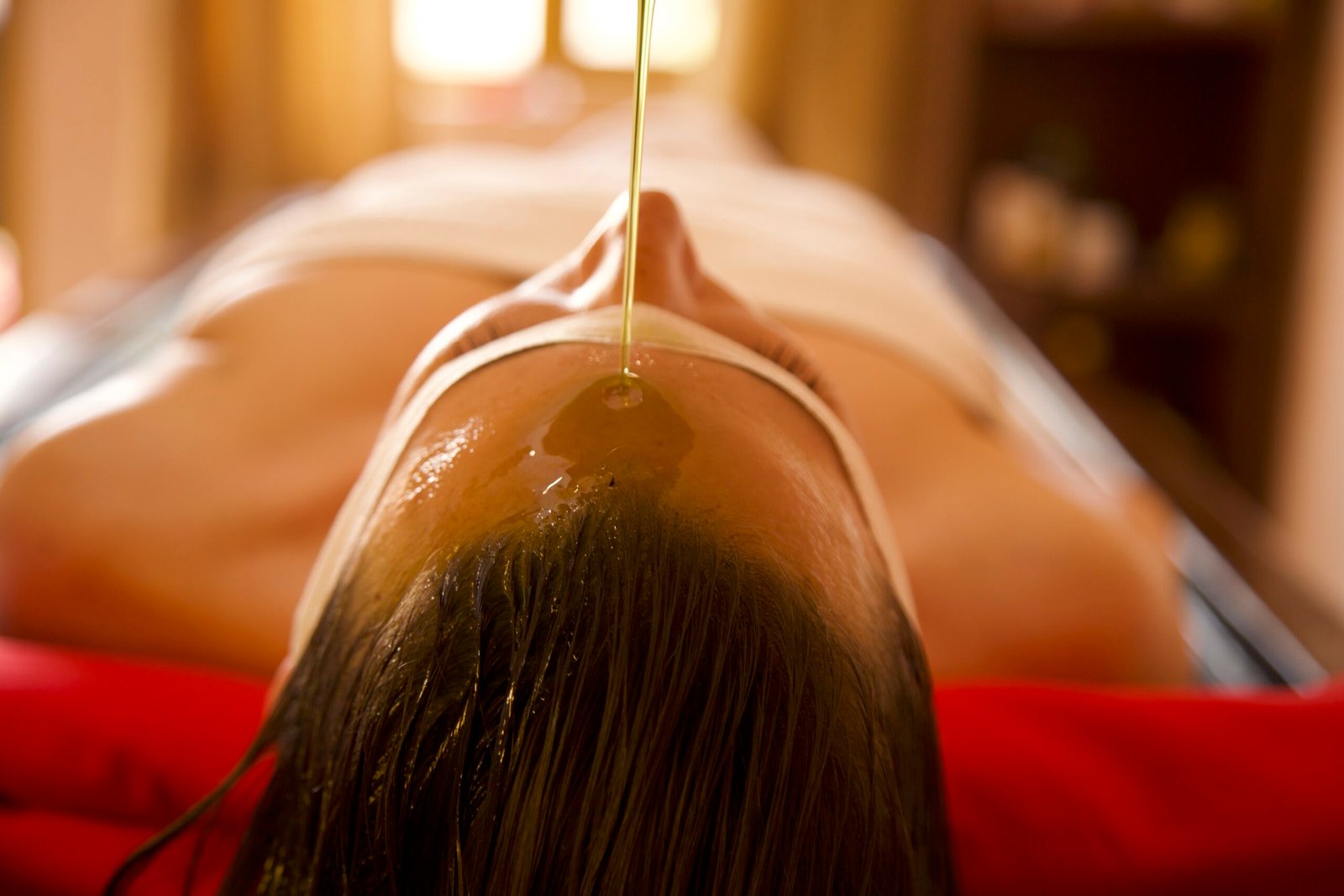
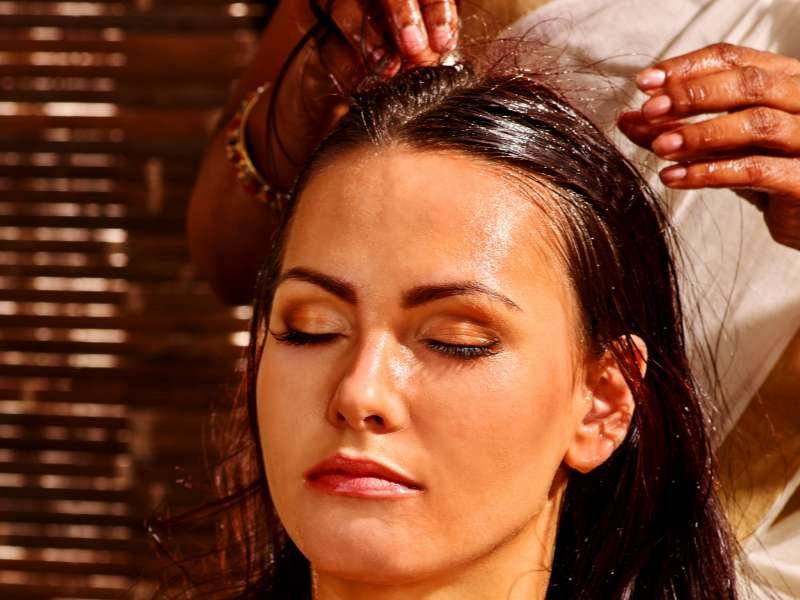




 If digestion has been properly completed, waste (mala) is produced in the shape of sweat, urine and faeces. These are normal bodily functions.
If digestion has been properly completed, waste (mala) is produced in the shape of sweat, urine and faeces. These are normal bodily functions.